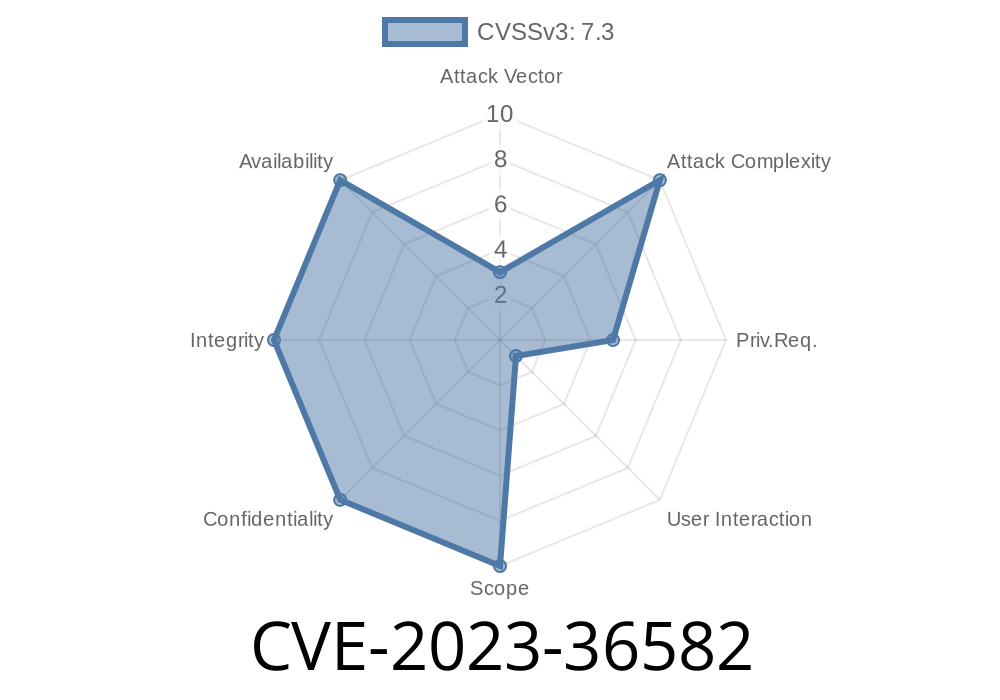In October 2023, Microsoft addressed a critical security bug known as CVE-2023-36582. This major flaw impacted Microsoft Message Queuing, a core Windows component for messaging between apps and services. In this long read, we’ll break down the vulnerability, show you a code snippet for understanding, link original references, and discuss how attackers can exploit it.
What is Microsoft Message Queuing (MSMQ)?
MSMQ is a service that enables applications to send and receive messages, even when they're not running at the same time. It’s used in banking, healthcare, logistics, and more, underpinning critical systems all over the world.
The service listens by default on TCP port 1801, but it also manages other ports depending on settings. Applications using MSMQ might not even know about it—it can be added silently as a Windows feature.
What is CVE-2023-36582?
CVE-2023-36582 is a *remote code execution* (RCE) vulnerability. This means that if your system is running the MSMQ service, and it's exposed to an untrusted network, an attacker could send malicious traffic to your service and run code of their choice on your system—potentially taking complete control.
Severity: Critical
CVSS Score: 9.8 (out of 10)
Affected systems: Windows Server and Client systems with MSMQ enabled
Where’s the Flaw?
The root of the problem is how MSMQ processes certain inbound network packets. In particular, it’s related to a flaw in the handling of specially crafted messages sent to the *Remote Read* functionality.
When MSMQ receives a message, it parses incoming data—if the data isn’t properly validated and sanitized, malicious code can sneak in. That’s exactly what happens here.
Technical Summary:
By sending a specially crafted MSMQ packet to a vulnerable server, an attacker could trigger a memory corruption, giving them the ability to execute arbitrary code with the privileges of the MSMQ service.
How Can Attackers Exploit This?
To exploit the vulnerability, an attacker only needs TCP network access to the MSMQ service port (default 1801). No authentication is required. Here’s a very high-level breakdown of a real exploitation flow:
Send Crafted Packet:
The attacker crafts and sends a malicious MSMQ packet to 1801/TCP.
Proof-of-Concept Code Snippet
Below is a simplified Python snippet that demonstrates sending a test MSMQ packet. (NOTE: Real exploits use deep knowledge of protocol fuzzing and packet formatting; the example here is for basic understanding only.)
import socket
def send_msmq_packet(target_ip, target_port=1801):
# This is NOT a real exploit; it's a basic packet sent to MSMQ
# Replace with malicious payload structure for actual RCE
msmq_payload = b'\x01\x00\x00\x00\x00\x00\x00\x00' # Fake MSMQ header, for demo
with socket.socket(socket.AF_INET, socket.SOCK_STREAM) as sock:
sock.connect((target_ip, target_port))
sock.sendall(msmq_payload)
print(f"Sent MSMQ test packet to {target_ip}:{target_port}")
# USAGE
send_msmq_packet('10.10.10.10')
> Warning:
> This code only sends a basic message for demo/education. Weaponized exploits require highly specific payloads, sometimes using open-source libraries like Impacket for network protocol handling.
Real-World Exploit Details
Shortly after Microsoft’s fix, exploit discussions appeared on GitHub and security blogs.
A real exploit involves reverse engineering MSMQ to discover the vulnerable code, then crafting network packets to abuse it—for example, by fuzzing certain fields or payload lengths. Some researchers published scanner scripts to detect if port 1801 is open, indicating MSMQ is running as a first step.
`
If port 1801 is open, and you haven’t applied the October 2023 Windows security updates, you may be at risk.
Patch Immediately:
Apply Microsoft’s October 2023 Patch Tuesday updates. Direct MSRC page
Firewall:
Block/limit access to TCP 1801 from outside your network.
Original References
- Microsoft Security Response Center – CVE-2023-36582
- Horizon3 Attack Research: CVE-2023-36582 Deep Dive
- GitHub – CVE-2023-36582 PoC and Analysis
- Rapid7 blog on MSMQ vulnerabilities
Summary
CVE-2023-36582 showed once again that old Windows services like MSMQ still hide dangerous flaws. Because MSMQ is often enabled and forgotten, it can create “sleeper” vulnerabilities that let hackers break in without needing passwords or accounts—just a network packet.
If you run Windows servers or apps, check if MSMQ is active, block unnecessary ports, and update your systems ASAP. Even if you don’t use MSMQ, attackers might still find and exploit it if it’s enabled.
Stay safe!
*Have questions? Leave a comment or see the official references above for more technical details and community discussions.*
Timeline
Published on: 10/10/2023 18:15:14 UTC
Last modified on: 10/13/2023 19:16:24 UTC
